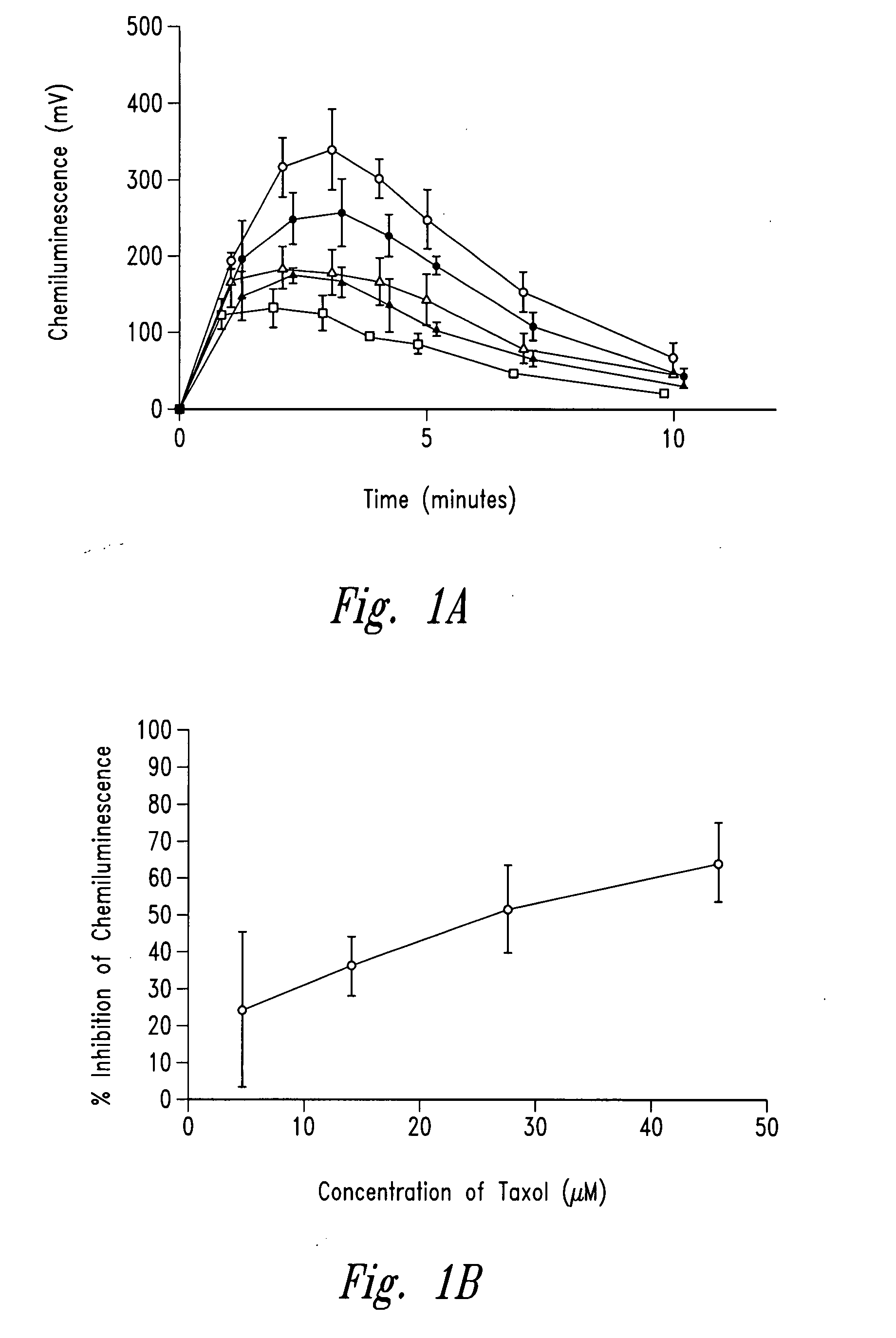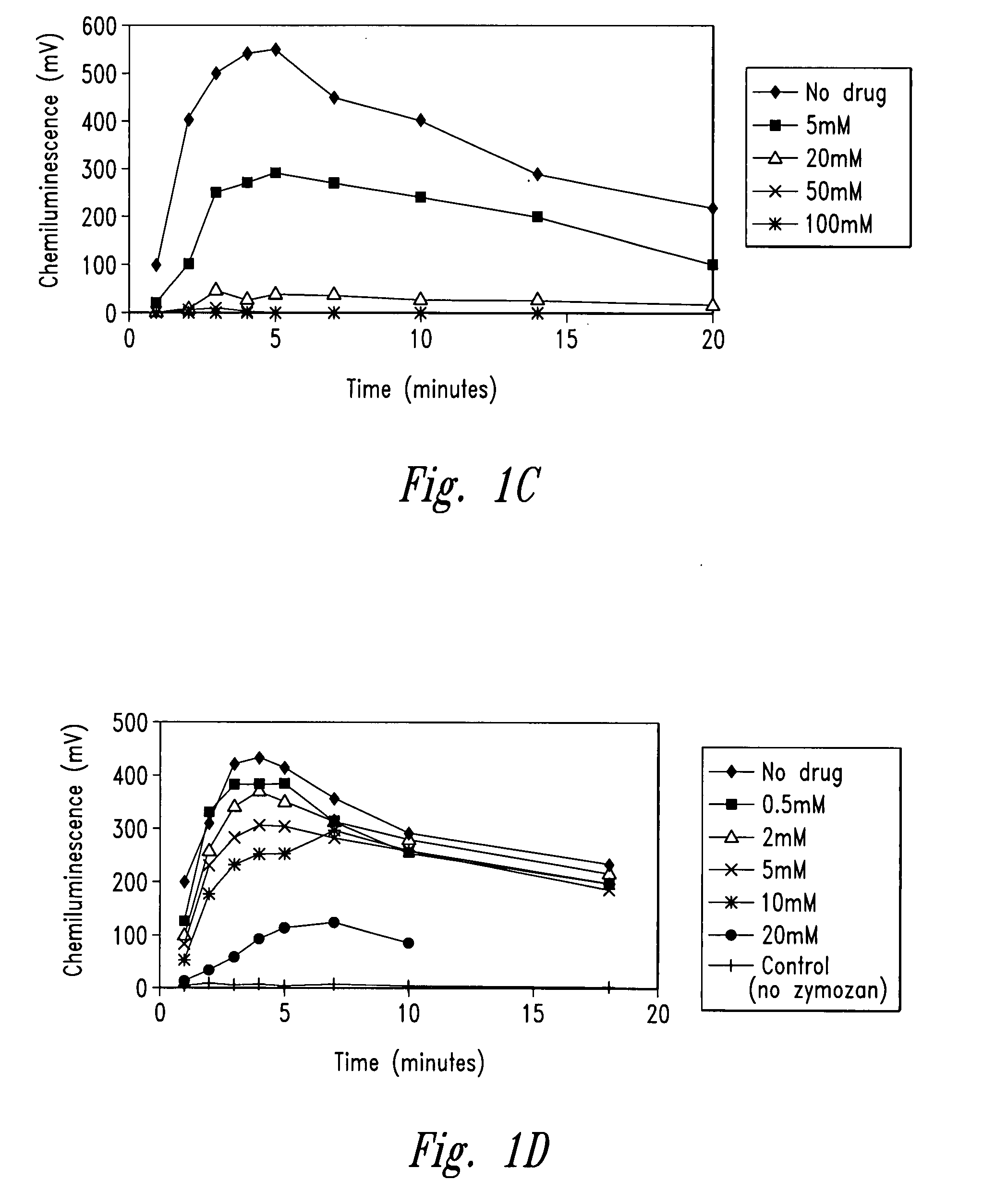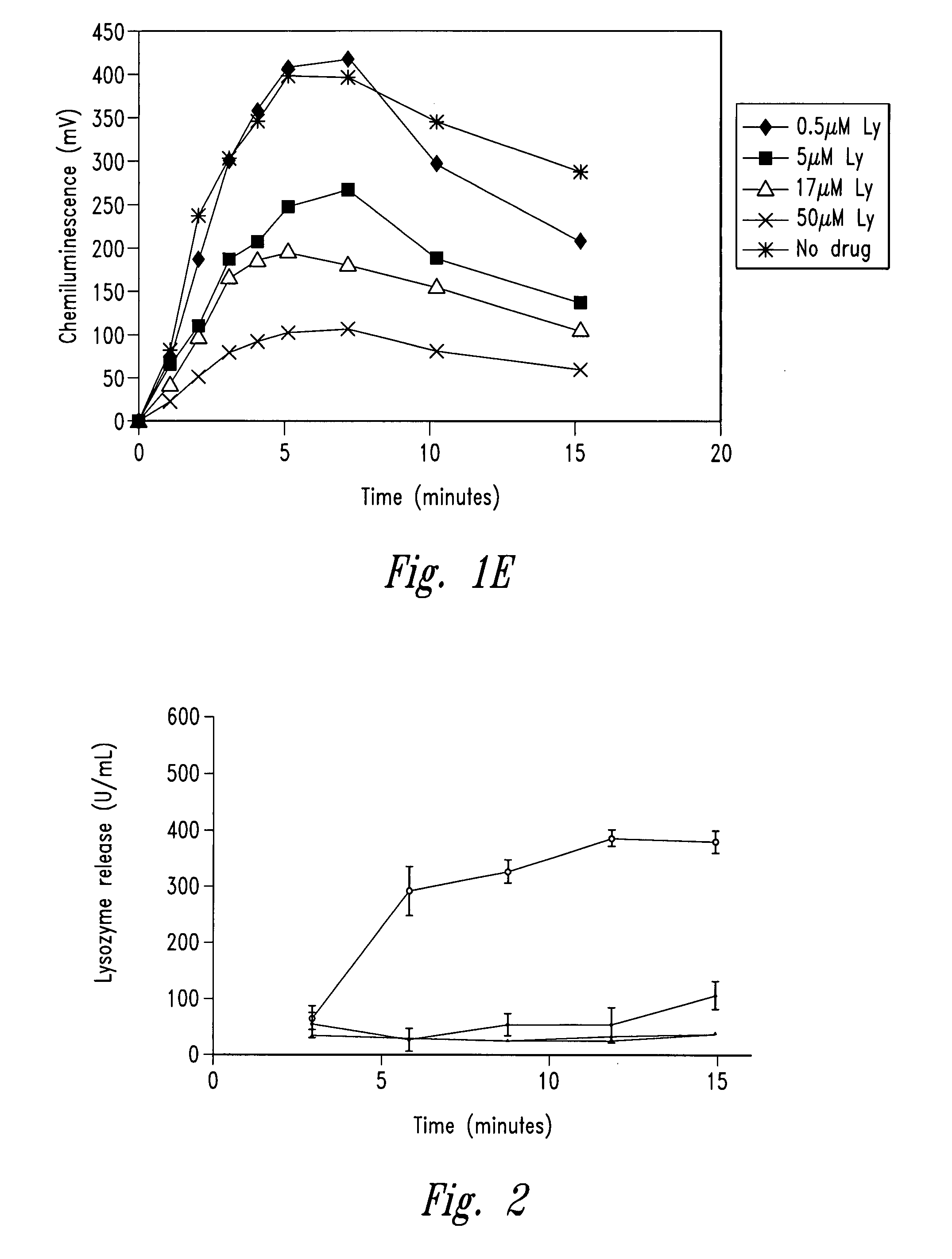Compositions and methods for treating or preventing inflammatory diseases
a technology applied in the field of compositions and methods for treating or preventing inflammatory diseases, can solve the problems of inflammatory diseases, whether substantial or not, and the current lack of a cure for psoriasis
- Summary
- Abstract
- Description
- Claims
- Application Information
AI Technical Summary
Benefits of technology
Problems solved by technology
Method used
Image
Examples
example 1
Effect of Anti-Microtubule Agents on Neutrophil Activity
[0256]The example describes the effect of anti-microtubule agents on the response of neutrophils stimulated with opsonized CPPD crystals or opsonized zymosan. As shown by experiments set forth below, anti-microtubule agents are strong inhibitors of particulate-induced neutrophil activation as measured by chemiluminescence, superoxide anion production and degranulation in response to plasma opsonized microcrystals or zymosan.
A. Materials and Methods
[0257]Hanks buffered saline solution (HBSS) pH 7.4 was used throughout this study. All chemicals were purchased from Sigma Chemical Co (St. Louis, Mo.) unless otherwise stated. All experiments were performed at 37° C. unless otherwise stated.
[0258]1. Preparation and Characterization of Crystals
[0259]CPPD (triclinic) crystals were prepared. The size distribution of the crystals was approximately 33% less than 10 μm, 58% between 10 and 20 μm and 9% greater than 20 μm. Crystals prepared ...
example 2
T Cell Response to Antigenic Stimulus
[0308]In order to determine whether paclitaxel affects T-cell activation in response to stimulagens, TR1 T-cell clones were stimulated with either the myelin basic protein peptide, GP68-88, or the lectin, conA, for 48 hours in the absence or presence of increasing concentrations of paclitaxel in a micellar formulation. Paclitaxel was added at the beginning of the experiment or 24 hours following the stimulation of cells with peptide or conA. Tritiated thymidine incorporation was determined as a measure of T-cell proliferation in response to peptide or conA stimulation.
[0309]The results demonstrated that T-cell stimulation increased in response to the peptide GP68-88 and conA. In the presence of control polymeric micelles, T-cell stimulation in response to both agonists was not altered. However, treatment with paclitaxel micelles, either at the beginning of the experiment or 24 hours following the stimulation, decreased T-cell response in a concen...
example 3
Effect of Paclitaxel on Synoviocyte Cell Proliferation In Vitro
[0311]Two experiments were conducted in order to assess the effect of differing concentrations of paclitaxel on tritiated thymidine incorporation (a measurement of synoviocyte DNA synthesis) and cell proliferation in vitro.
A. Materials and Methods
[0312]1. 3H-Thymidine Incorporation into Synoviocytes
[0313]Synoviocytes were incubated with different concentrations of paclitaxel (10−5 M, 10−6 M, 10−7 M, and 10−8 M) continuously for 6 or 24 hours in vitro. At these times, 1×10−6 cpm of 3H-thymidine was added to the cell culture and incubated for 2 hours at 37° C. The cells were placed through a cell harvester, washed through a filter, the filters were cut, and the amount of radiation contained in the filter sections determined. Once the amount of thymidine incorporated into the cells was ascertained, it was used to determine the rate of cell proliferation. This experiment was repeated three times and the data collated.
[0314]2...
PUM
| Property | Measurement | Unit |
|---|---|---|
| time | aaaaa | aaaaa |
| thick | aaaaa | aaaaa |
| diameter | aaaaa | aaaaa |
Abstract
Description
Claims
Application Information
 Login to View More
Login to View More - R&D
- Intellectual Property
- Life Sciences
- Materials
- Tech Scout
- Unparalleled Data Quality
- Higher Quality Content
- 60% Fewer Hallucinations
Browse by: Latest US Patents, China's latest patents, Technical Efficacy Thesaurus, Application Domain, Technology Topic, Popular Technical Reports.
© 2025 PatSnap. All rights reserved.Legal|Privacy policy|Modern Slavery Act Transparency Statement|Sitemap|About US| Contact US: help@patsnap.com



